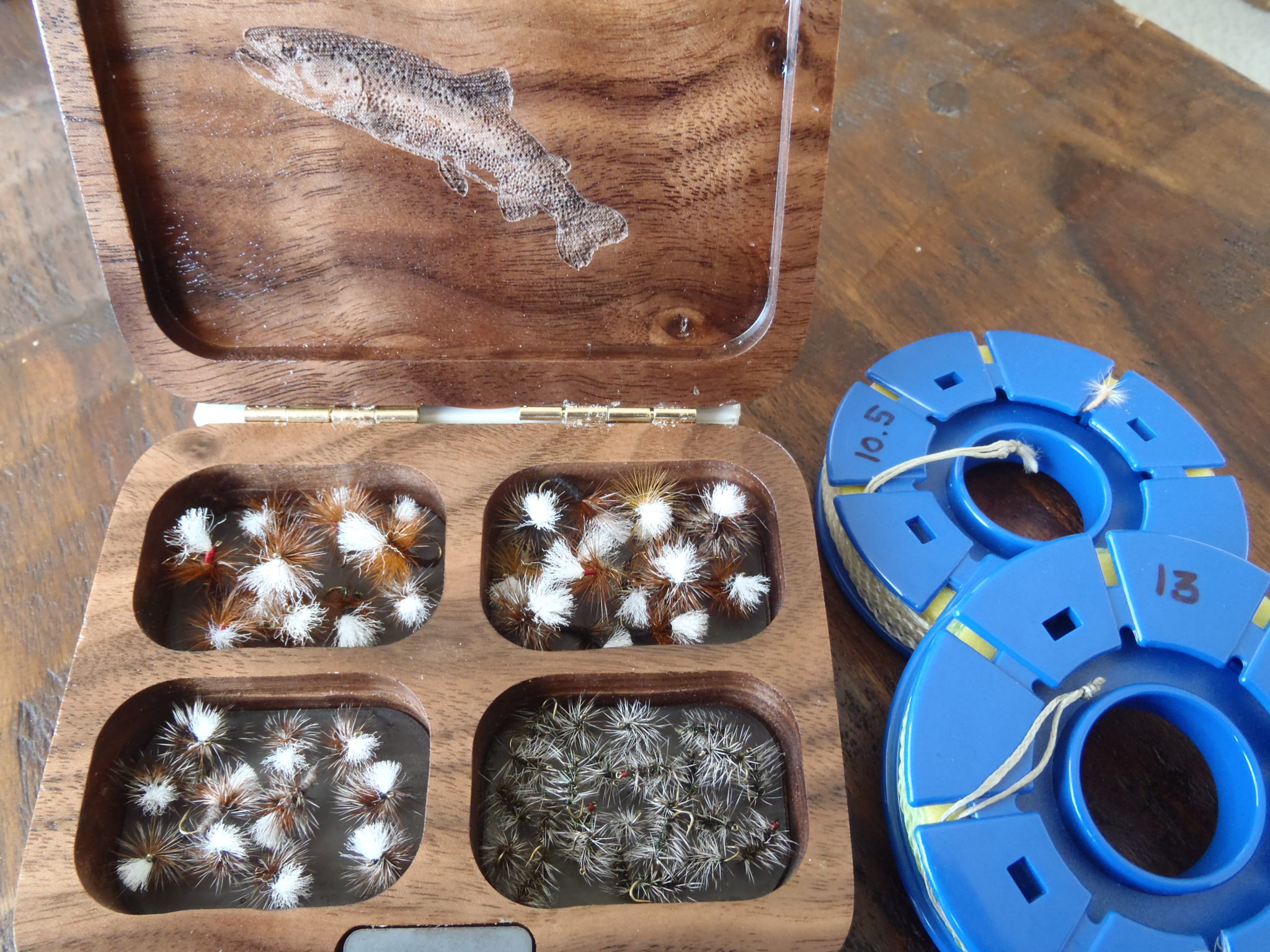I get asked this question a lot. And like many of my answers, I’m forced to say, “it depends”. There are a variety of factors that determine how big of a selection you need to take on backcountry fly fishing trips. Here are a few considerations that might help you figure it out…
- How long is the trip? If you’re just going out for a weekend, you don’t need that many flies. Just take a small representative sample that covers the basics and you should be fine. If you’re out for a month, make sure to bring several duplicates of your top producing patterns. The last thing you want is to run out of flies halfway through a month-long trip in the middle of nowhere.
- How well do you know the waters you’ll be fishing? If you know the area well, you probably already know which patterns work and which don’t. Use your past experience and put together a selection of flies that have worked well in the past. Bring a bigger assortment of flies for unfamiliar areas. Don’t run the risk being in a situation where you wish you had brought that one fly that the fish seem to be keyed in on.
- How selective are the fish? If you’re fishing high altitude streams where the fish tend to be more opportunistic, you don’t need to carry 8 fly boxes with patterns in every conceivable species and size. A small selection of general attractor patterns should work just fine. If you’re fishing spring creeks or areas with a fair amount of pressure, it’s a good idea to have a wider variety of patterns to coax wise fish into striking.
- How experienced are you? If you’re just starting out in fly fishing, you’re going to lose flies to trees, rocks, fish, or (hopefully not) your own ear. It’s just a fact of life. Bring doubles or triples of the patterns you think you will fish the most and plan on losing a few. More experienced anglers are less likely to lose as many flies so you can get away with less.
My experience has been that whenever I take a broad selection, I always end up fishing only one or two patterns. Over time, you develop your “confidence” flies and that is probably a big factor too. Now, I carry more of my confidence flies rather than a wide variety of patterns and only carry one box with them in various sizes.
In the end, there is no definitive number that will work for everyone. But if you ask yourself the questions above, you might find that you don’t need as many flies as you think.
What does your backpacking fly selection look like? Do you have any confidence patterns?









I like the concept of simplifying my fly box but the reality is that I have confidence in many types of flies and have found situations when only a very diverse box has saved the day for me. So, I always end up stuffing many different types of flies in my box. I fish nymphs, pseudo-nymphs (roe, sowbug, aquatic worm patterns etc.), micro streamers, strike indicators and dry/dropper rigs more than the average Tenkara angler and it works very well for me. I generally only go completely dry when fish are responding very well on the surface (about 25% of the time in high country and 10% in lower elevation waters).
During the more active months of the year, for a weekend, I may only carry two or three types of dry flies with a mix of colors. For instance I may take a few sparkle duns in olive, grey, and mahogany. Along with those I might bring some parachute adams and/or some tan caddis. Something to that effect anyway. I have a small tin about the size of a matchbox for all the flies I use for 2 to 3 days. Anywhere from 12 to 15 if I had to put a number on it.
flies barely weigh anything so why skimp on your box. Backcountry fish are usually stupid and you can get by with a wolly bugger, stimulator, beetle and ant. why take less when you can take more. a hundred flys weigh what an ounce, taking the least amount of flys is a stupid concept and should be left in japan. who ever has the most wins is the way we roll and i;ve been hitting the back counrty for almost 20 years, and it is fun to take out a totally random fly from your box and sly the trout. less is never more!